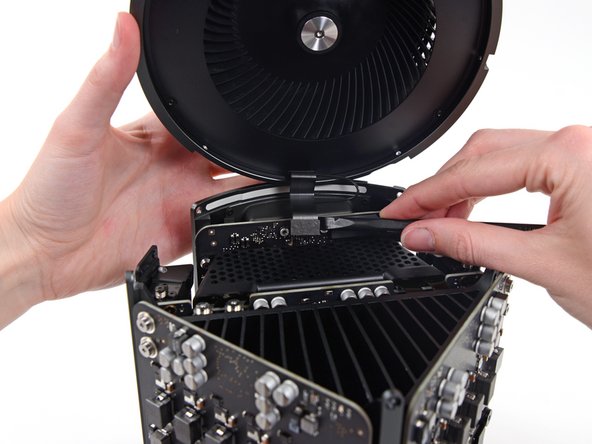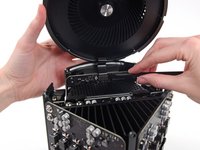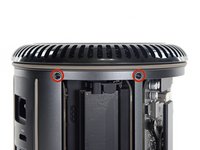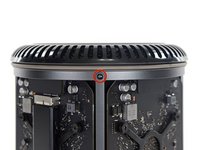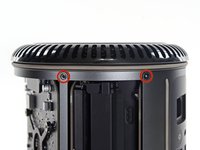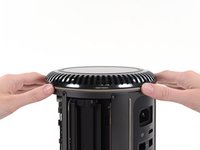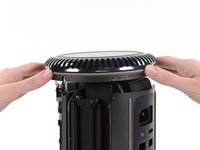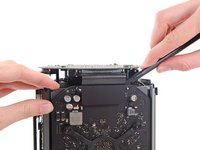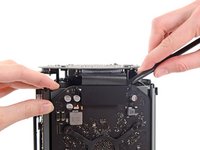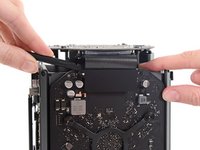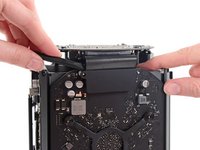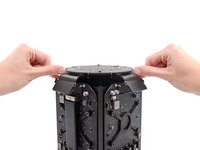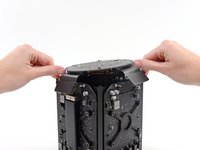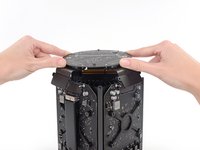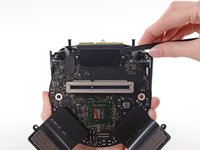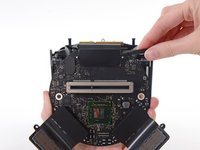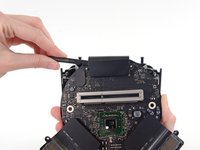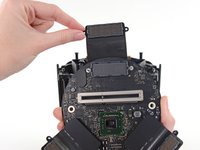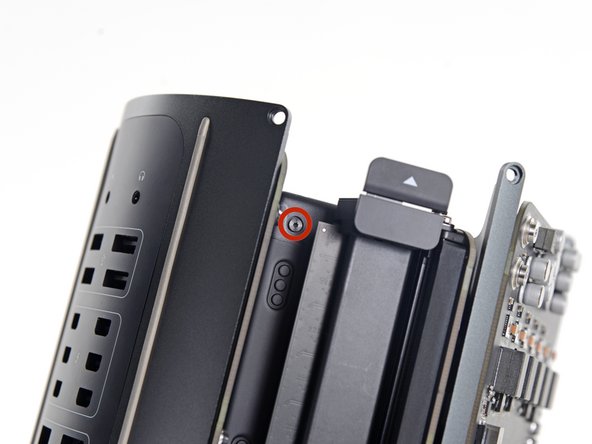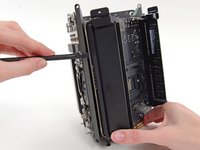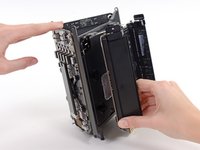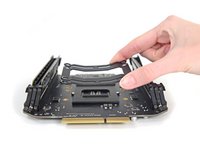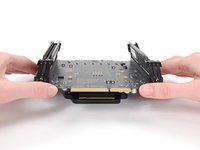Introdução
Use this guide to replace the CPU.
Removing the logic board means you'll need to reapply a layer of thermal compound.
Before beginning any work on your Mac Pro: Unplug the computer and press and hold the power button for ten seconds to discharge the power supply's capacitors.
Be very careful not to touch the capacitor leads or any exposed solder joints on the back of the power supply. Only handle the board by the edges.
O que você precisa
-
-
Remove five 5.1 mm T10 Torx screws from around the outer perimeter of the fan assembly.
-
-
-
Remove five 5.1 mm T10 Torx screws from the outer perimeter of the lower case.
-
-
-
-
Use the flat end of a spudger and a twisting motion to gently separate one side of the graphics card data connection.
-
-
-
Flip the Mac Pro back over and set it gently on a flat surface.
-
-
-
Lift and remove the logic board from the CPU and bracket.
-
During reassembly, be sure to clean off and replace the thermal compound on the CPU.
-
We have a thermal paste guide that makes replacing the thermal compound easy.
-
To reassemble your device, follow these instructions in reverse order.
Cancelar: não concluí este guia.
91 outras pessoas executaram este guia.
48Comentários do guia
So this means I can buy the smallest Mac Pro now and upgrade the CPU in a few years, right? I like you guys! :)
Yes, Ben, you could. 2nd hand CpU's are available on eBay, Amazon and various companies. Review suitability of your proposed CPU that it will fit the socket FCLGA2011, and pay attention to voltage. ECC support, and TDP. Switching CPU isn't an easy task and it has risks replacing it.
Mel -
Hi Ben, I found an interesting website with more info regarding CPU upgrade:
https://blog.macsales.com/22230-owcs-mac...
from
Mel -
I just replaced the cheapest 4-core version with the 12 core 2697v2.
This saved me around $700 + i can sell the 4 core.
Can you please provide some benchmarks, i wish to do the same, but need to see if doing this myself creates any problems
























